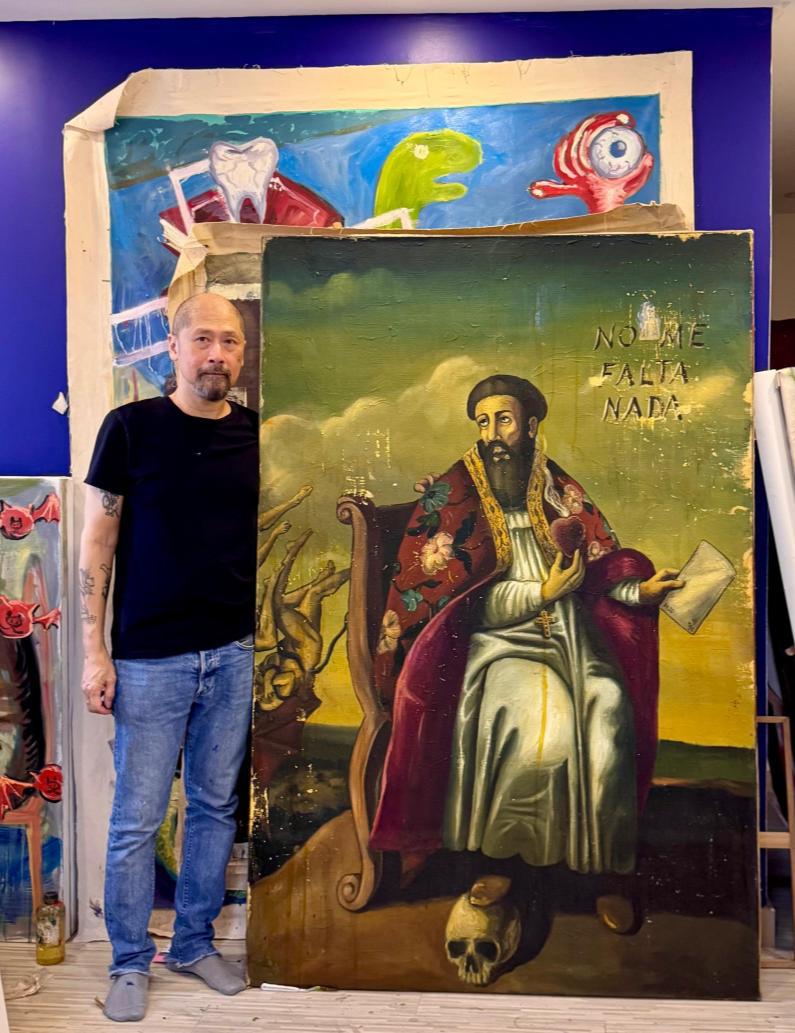Upcoming Exhibition
KoreanABOUT THE ARTIST

Manuel Ocampo
(b. 1965- Philippines)
The artist has been a vital presence on the international art scene for over two decades now; his works were presented in two of the most important European art events, the Venice Biennale (1993) and Documenta IX (1992). In the early 1990s, he participated in the iconic exhibition “Helter Skelter: L.A. Art in the 1990s” at The Museum of Contemporary Art, Los Angeles (1992).
Public collections include MOCA Museum of Contemporary Art, Los Angeles; MINCARs Museo Nacional Centro de Arte Reina Sofia, Madrid; Fonds National d’Art Contemporain, Paris; Fukuoka Asian Art Museum, Japan; and MUDAM Musée d’Art Moderne Grand-Duc Jean, Luxembourg.

Oil on Canvas
Commissioning in Process
This series presents paintings currently in development for the ‘Isang
Dipang Langit.’ exhibition. Each oil on canvas varies in scale and
format, together forming a cohesive body of work.
Manuel Ocampo’s painting philosophy rests on a deliberate clash of
the sacred and the profane, using loaded imagery-from Catholic
iconography to colonial emblems, swastikas, and cartoon figures-to
expose the fragility and corruption of symbols of power. By
subverting these icons of authority, Ocampo destabilizes meaning
itself, turning reverence into grotesque parody and solemnity into
absurd humor. His works resist purity, embracing hybridity and
contradiction as a way to mirror the postcolonial Filipino condition:
fragmented, messy, and constantly negotiating between Western
impositions and local realities.
Deploying an arsenal of art-historical and literary references,
religious and popular iconography, Ocampo’s complex paintings
weave together various visual vocabularies, creating implied
meaning through accumulation and its interrelationships. Presented
to viewers in a way that remains deliberately opaque, the symbols
and its formal properties that render them - their vivid colours,
energetic gestures and course brushstrokes - open up a spectrum of
interpretations that defies easy definitions
